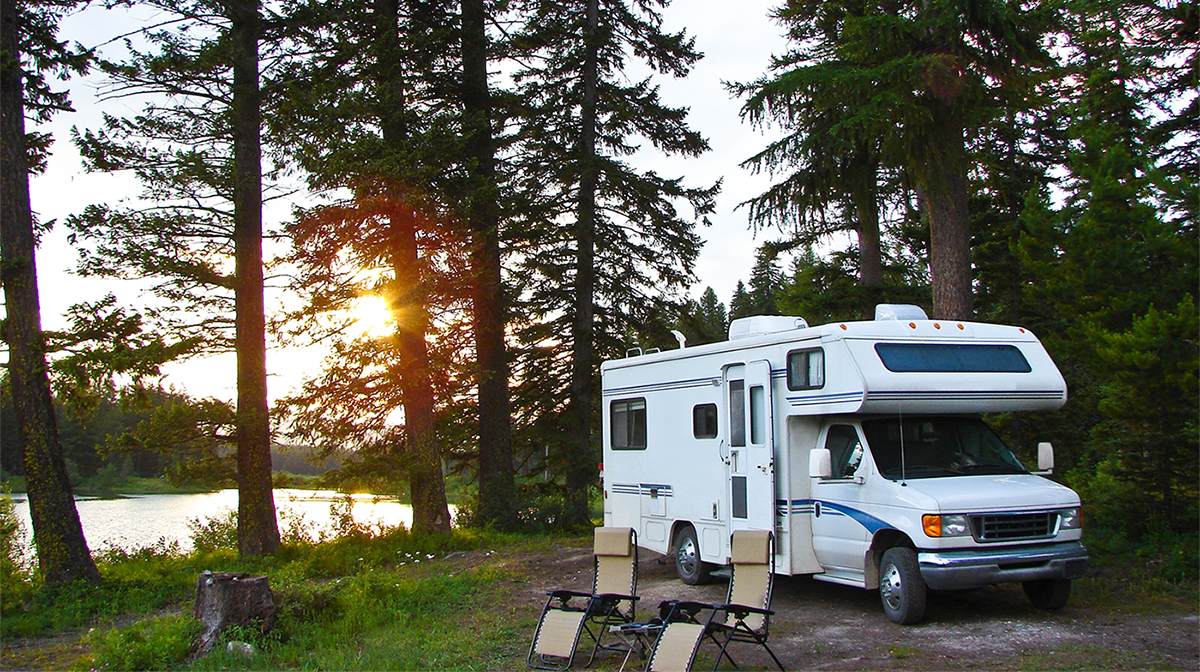RV Trip Checklist
1. Plan your route
One of the great things about RVing is the freedom it gives you to explore new places. However, it’s always a good idea to plan ahead so you know where you’re headed and when you’re going to get there. Don’t put yourself under too much time pressure. RVing should be fun and relaxing. Plan the most important stops along your route but leave plenty of time between stops to explore. Often, it’s places you’ve never heard about that are the most interesting.
Some destinations are super popular, such as major tourist attractions. If you’re planning to camp somewhere like Mount Rushmore, you can’t just turn up and hope you’ll find somewhere to stay. You need to book ahead for the more important or popular stops along your route. Consider purchasing smartphone apps to help find RV campsites, Bureau of Land Management (BLM) land in the wilderness, and even Walmart parking lots where you can stay along your route. One popular app is ALLSTAYS.
2. Plan your stops
If you’re new to RVing, you may feel most comfortable staying in developed RV parks that offer hook-ups to sewers, water, and electricity. However, they are not your only choice. If you don’t restrict yourself, you can experience much more of the world.
Boondocking is awesome. The advantage is that it opens up many more destinations and locations, many of which you can stay for free. The disadvantage is that you can’t hook-up to the usual services. Think about relatives, internet friends, old college classmates who live along your route. Why not use this opportunity to reconnect and ask if you can park in their driveway? RVers frequently stay in Walmart parking lots. And in more remote locations, you’ll find that a conversation with the local gas station or convenience store owner will gain you permission to park on their land.
3. Think ahead about power and water
Before boondocking, ensure your batteries are fully charged, your freshwater tank is full, and your grey water tank is empty. When you are running low you’ll need to stay in an RV park with all the services. Experienced RVers often use deep-cycle batteries, power generators, and strict water usage policies to decrease the number of stays at expensive, developed campgrounds. You could also benefit from the use of a power inverter that enables you to use standard household appliances while using a DC power source.
4. Carry the right tools
If you must make minor repairs along the way, such as changing a wheel, you’ll need the right tools. If your RV is a towable trailer, you’ll soon discover that the RV lug nuts are not the same size as those on your vehicle. A 4-way wrench and wrench set are required to deal with all the different sized nuts on your RV. The screw faces used in many RVs are Robertsons with a square hole. You need a set of Robertson’s bits to unscrew them. Other useful tools include leveling blocks to set your trailer on uneven surfaces and a digital tire gauge for checking tire pressure.
5. Check your tires
For a safe and smooth ride, ensure your tires are the right pressure. Check your RV’s weight against your tires’ load capacity PSI chart. Sometimes used RVs are fitted with the wrong kind of tire. Check that the tires attached to your wheels are rated for use with your RV. Also, ensure that your tires aren’t too old. There should be a 4-digit number on the back of your tires. Worn tires or tires over 5 years old should be replaced. Play it safe. If you’re planning on driving from the west coast to the east coast, you’re going to put a lot of miles on those tires. It’s better to replace them than have tires let you down in the desert, miles away from the nearest auto shop.
6. Avoid accidents
You’re likely used to driving a very different vehicle when you’re not on vacation, so be aware of the differences. This sounds obvious, but there are reasons you must take more care to avoid accidents. Check the height and length of your RV. Some RVs are tall, and some tunnels are low, especially on the east coast. Low bridges and tunnel entrances have signs to tell you the maximum vehicle height, and you need to ensure that your RV is shorter than this. Similarly, winding roads through mountains and tunnels along mountain routes often have maximum vehicle lengths because of extremely tight turns. Drive slower than you would during your work week and appreciate the beautiful scenery along the way. Also, don’t rush when you’re setting up or packing away in an RV park. Be careful, asks questions, and develop a routine to avoid omissions and errors.
7. Be environmentally friendly
If you’re driving an RV, you probably love the Great Outdoors. Please do your best to preserve it for future generations. Consider using solar panels to contribute to your power generation. Don’t tip your greywater into streams or the ground. Don’t leave litter. Also, keep your RV well-maintained and don’t carry more stuff than you must to minimize gas consumption. It’s all for your benefit. Not only will you be helping the environment, but these actions can also help you save money.
Compiled by and courtesy of RV Trader.
2020




